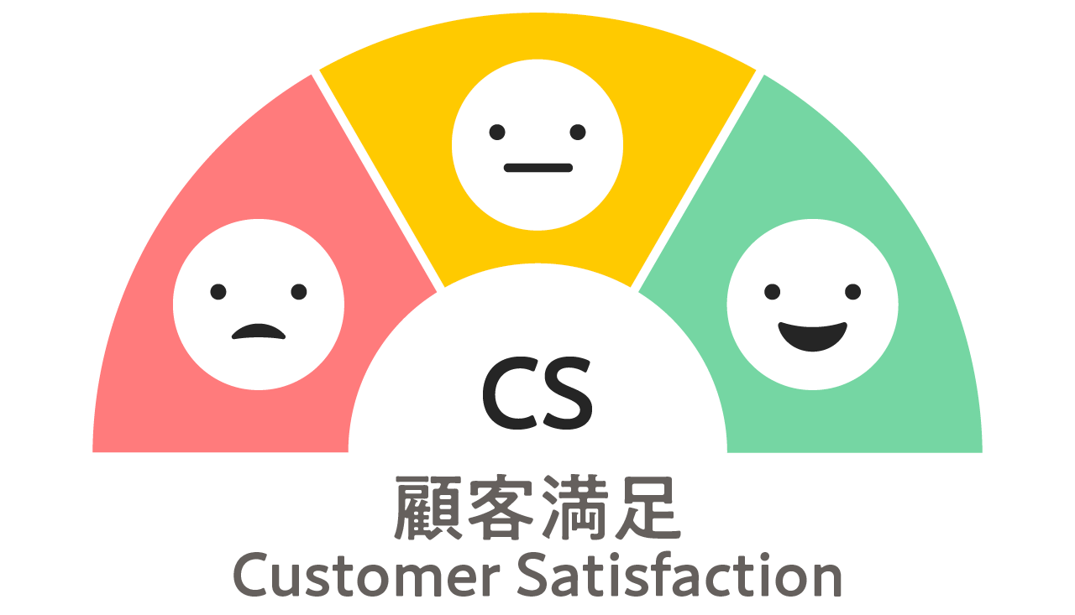
September 29, 2025
When a Customer Says They're "Satisfied," Is the Work Truly Done? The Dilemma Between Craftsmanship and Business
Many craftsmen and artists I've encountered over the years have something in common:
They are never truly satisfied.
When a customer places an order, they carry out the work accordingly, but they often finish their work with doubts. They are never fully confident that it's truly complete. Yet, once the customer says, "I'm satisfied," there is a need to bring the work to a close -- after all, it is a business.
In this article, I would like to explore how to face and navigate this dilemma.

What Customer Satisfaction Means for Business Success
First, let's begin by clarifying the concept of "customer satisfaction."
What Is Customer Satisfaction?
Customer satisfaction, often abbreviated as "CS" (Customer Satisfaction) in marketing terminology, refers to a measure of how much satisfaction a customer feels after purchasing a product or service.

The concept of CS gained traction in the United States from the 1980s onward. In Japan, the Japan Management Association proposed "CS Management" in 1991.*1
Customer satisfaction is closely linked to customer behavior, word-of-mouth, and customer loyalty, making it a crucial factor in business.
My Experience with Customer Satisfaction as a Marketer
As a marketer working within a company, customer satisfaction was always at the center of my work. I was rigorously trained to prioritize the "customer's perspective." I had to learn that a marketer's personal ego not only isn't necessary -- it can even be harmful.
Decisions shouldn't be based on what you want to do, but on what the customer needs. Uncovering customers' innermost feelings--their true, often hidden desires, we seek to develop products and services that meet those needs. Through improving CS levels, companies build a competitive advantage over rivals and become the preferred choice in the ongoing battle for customer loyalty.
It's a constant competition to win over customers through satisfaction.

The "Never Satisfied" Philosophy of Craftsmen and Artists
On the other hand, the concept of satisfaction takes on a different meaning for craftsmen and artists. Through my family business and my work in creative industries, I've had many chances to witness the dedication and professionalism of these individuals. Some are so committed to their own standards that they clash with customers over differences. I've often felt a mix of frustration, admiration, and even envy toward them.
The Endless Pursuit of Perfection
Craftsmen and artists maintain a state of "not being satisfied" even when customers say, "I'm satisfied." This is because their standard of satisfaction is not the customers', but their own. Their perfectionism is driven by personal aesthetic standards, passion for their craft, and the desire to express a specific message through their work. On top of that, their goals and ideals are set extremely high, so achieving 100% self-satisfaction is nearly impossible.
The Tension Between "Never Satisfied" and Business
This "never satisfied" mindset fuels the quality of craftsmanship but can also pose challenges in business. What satisfies a customer and what satisfies the creator are often two different things. For example, craftsmen and artists may focus on technical excellence or artistic value. Customers, on the other hand, often prioritize how well something fits their personal taste, how functional it is, or how convenient it is to use.
And crucially, customer satisfaction is often judged in relation to price: Did the product or service provide enough value for what they paid?
Customers assess satisfaction through a clear lens of cost-versus-benefit. That's fundamentally different from a craftsman's internal, never-ending quest for perfection. This gap can make it difficult for creators to achieve success as a business.
There Is No Single Answer
The challenge is that there is no one-size-fits-all solution to this issue.
Some craftsmen refuse to bend to business demands, walking their own path--and eventually gaining recognition for it. Others take a more flexible approach to customer needs and build loyal following. While customer-centric thinking is essential for business success, whether it leads to better craftsmanship is another question.
Some say, "If you're taking money, you need a business mindset."
Others argue, "If art panders to the audience, it's no longer art."
And still others question, "If it only satisfies the creator and holds no value for anyone else, can it really be called a work?"

Blending Customer Satisfaction with Self-Satisfaction in Craftsmanship
With so many differing views, it's not easy to find a clear answer.
Ultimately, each party must make choices based on their own values. I myself haven't found a definitive answer.
Creation and Innovation Born from "Not Quite Satisfied"
Still, I strongly believe that even if a customer is fully satisfied, the creator's own dissatisfaction is what drives innovation and creativity. That nagging sense of "not quite there yet" becomes fertile ground for new ideas and breakthroughs.
Customer satisfaction is undoubtedly important, but if we start to think, "As long as the customer is happy, that's good enough," we run the risk of stagnation--or worse, harm.
Diversity as a New Opportunities
In today's society, where diversity is spreading, marketing strategies that cater to the masses like in the past have become outdated.
It is important to focus on each individual customer's unique needs. Providing original value that those individuals seek fosters genuine customer satisfaction. From another perspective, the moments when self-satisfaction and customer satisfaction align are increasing, expanding the chances of business success.
When the "creator's individuality" and "customer needs" successfully match, the outcome is likely to be rewarding for both sides.

Flex Where You Can, Stand Firm Where You Must
Flexibility is essential--but not everywhere.
If you compromise your core beliefs or the essence of your work, you risk losing the originality of your creation. On the other hand, being adaptable to customer needs or market trends can keep your business flowing.
Striking this balance is key to long-term success. Knowing clearly what values you stand by and what you won't compromise on helps customers better understand your work, too.
That mutual understanding can deepen your connection with customers. And if, supported by those who truly "get" you, you can aim for even greater heights--perhaps that's the ideal form of craftsmanship.
In Closing
As I wrote earlier, I still don't have a clear answer to this dilemma. I believe there are many valid perspectives.
My father, who was also a creator, used to say, "People pay good money for the things I tossed aside as rejects." He always said it with genuine wonder.
I too am involved in creative work. At the moment I keep it separate from business, but this is a theme I want to keep exploring--how best to bring the two worlds together.
Note:
*1 Source: Japan Management Association Consulting, "CS - Customer Satisfaction Improvement Consulting"
https://www.jmac.co.jp/consulting/category/marketing/cs.html

Tsumugi Mishima
Works in marketing and organizational development at a startup. Also active as a writer, drawing on her experience in product development and brand launches.


